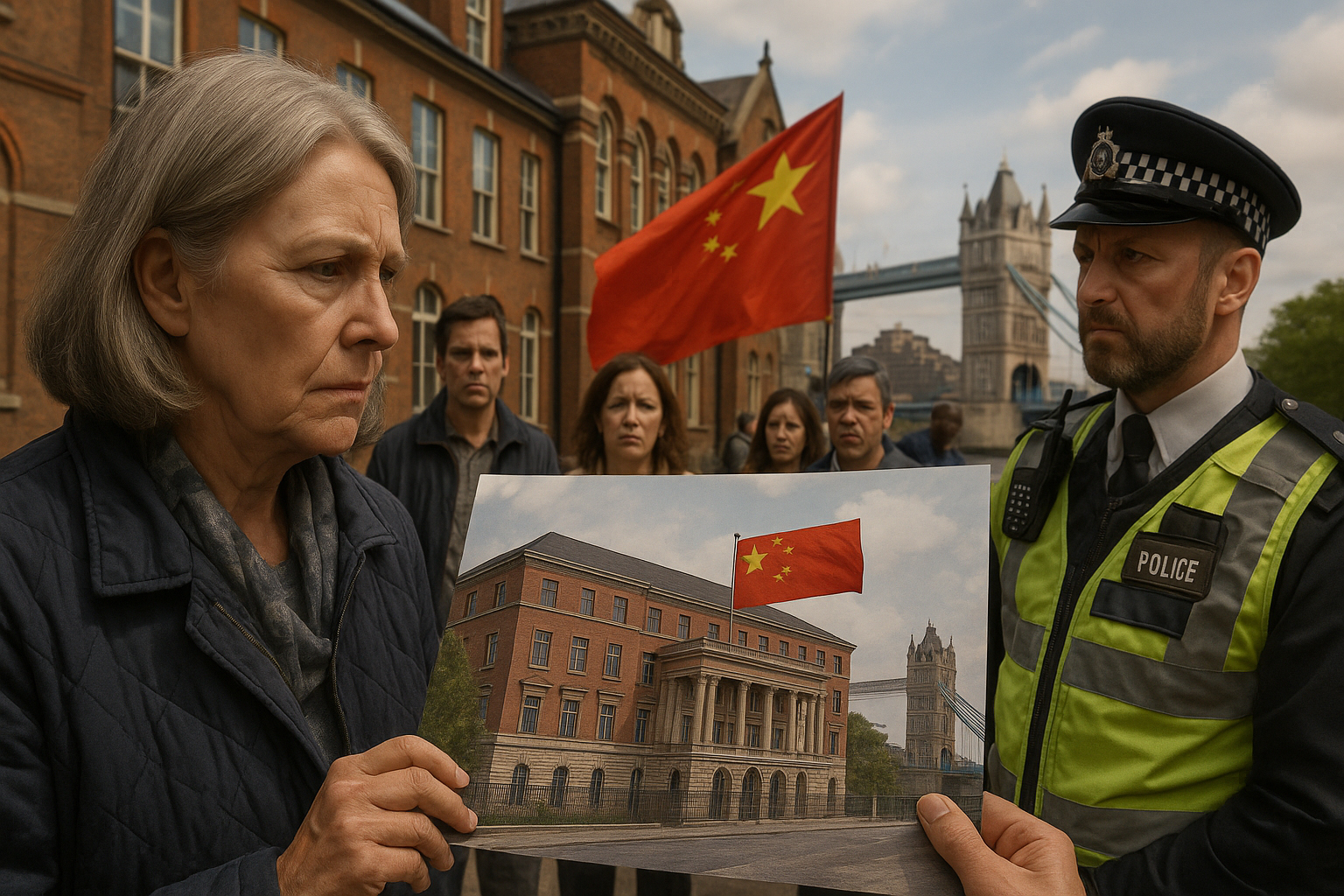China’s ‘super-embassy’ plans in London spark local fears and security concerns

A quiet stretch of Cartwright Street, tucked away near some of London’s most iconic landmarks, is at the centre of a storm of controversy as China presses ahead with plans to build what has been described as a “super-embassy” in the heart of the British capital.
The proposed diplomatic complex at Royal Mint Court, a historic site near Tower Bridge and the Tower of London, has sparked unease among local residents, rights groups, and authorities alike, as questions of personal safety, espionage, and the influence of foreign powers loom large.
Royal Mint Court, once home to the facility that produced Britain’s coinage, now stands empty.
In 2018, China acquired the expansive property for approximately $312 million, and the plans for its transformation involve hundreds of millions of dollars of further investment to create the largest embassy in Europe.
The sheer scale of the proposed complex has alarmed locals, who are already facing the prospect of having the embassies’ staff and operations within immediate view of their homes.
Apartments on Western Cartwright Street, which currently offer quiet residential views, could soon border the living quarters of Chinese embassy personnel.
For many residents, the proximity of the embassy has become a matter of anxiety.
The Royal Mint Court Residents’ Association, representing roughly 300 individuals living in nearby buildings, has been actively campaigning against the project for years.
They cite concerns over China’s potential influence as a landlord once the embassy is operational. With some 100 properties in the area now on Chinese-owned land, residents worry that the transformation of Royal Mint Court into a diplomatic outpost could extend Beijing’s reach into their day-to-day lives.
Security fears extend beyond the residential impact. Government and law enforcement officials have expressed apprehension over the broader implications of the project.
London’s Metropolitan Police, for instance, has highlighted the potential for mass demonstrations outside the embassy to disrupt local traffic and spill over into tourist-heavy areas, creating logistical challenges in one of the capital’s most visited neighbourhoods.
The timing of the embassy’s development has amplified concerns. In recent years, Beijing has issued bounties against certain Hong Kong activists residing in the UK.
The city has become a key refuge for those fleeing political repression following the tightening of Beijing’s control over the semi-autonomous region.
Residents and rights groups fear that a large embassy complex could serve as an operational hub to monitor or even intimidate Chinese dissidents in Britain, facilitating what critics have described as a “long-arm” approach to law enforcement.
Past incidents reinforce these apprehensions. In October 2022, a Hong Kong pro-democracy protester in Manchester was reportedly dragged onto the grounds of a Chinese consulate and physically assaulted.
The event, captured on camera, led to the removal of six Chinese diplomats from Britain when police sought to question them in connection with the incident.
For many observers, the episode underscores the risks associated with a powerful diplomatic presence in a central urban location, heightening the sense of unease surrounding Royal Mint Court.
China’s proposed embassy plans were first rejected by the Tower Hamlets council in 2022, with officials citing security issues as a key reason.
However, the proposal was resubmitted last year following the Labour Party’s return to power under Prime Minister Keir Starmer, signalling Beijing’s belief that the political climate might now be more favourable.
A decision on whether to approve the development is expected from Deputy Prime Minister and Housing Secretary Angela Rayner by September 9.
In a recent development, Rayner asked China to justify why parts of its submitted plans were redacted, giving a two-week deadline to provide explanations.
The potential transformation of Royal Mint Court also marks a significant departure from the site’s intended redevelopment. Before China’s purchase, the area had been slated for a mix of commercial and residential use, including shops, offices, and a leisure complex.
While the embassy plans do not bring these privately-owned homes under diplomatic jurisdiction, residents remain concerned about how the proximity of a high-security, high-profile facility will affect the character and atmosphere of their neighbourhood.
Espionage concerns are particularly acute in the context of international relations and the increasing scrutiny of China’s overseas activities.
Critics argue that modern embassies, particularly those described as “super-embassies,” can serve not only as diplomatic missions but also as operational hubs for intelligence collection and surveillance.
The scale and strategic location of the Royal Mint Court site, near central London landmarks and tourist attractions, have made these fears more pronounced.
Community anxiety is compounded by the knowledge that large diplomatic compounds often operate with significant autonomy.
Observers note that high-security facilities can impose restrictions on the surrounding area, from increased surveillance to limited access, creating a palpable tension for residents whose daily routines intersect with the operations of foreign personnel.
Rights groups and activists have voiced alarm over the potential consequences for political exiles and dissidents living in the UK.
The spectre of overseas “policing” by foreign governments has been documented in multiple instances, and the Royal Mint Court project has brought these issues into sharp focus for Londoners.
Critics argue that a powerful embassy presence in the city could exacerbate fears of coercion or monitoring of Chinese nationals and Hong Kong activists.
China’s ambitions in London also reflect a broader strategy of asserting influence in global capitals, a development that has drawn attention from policymakers and media worldwide.
As diplomatic missions expand and become more fortified, the lines between conventional diplomacy and security operations appear increasingly blurred, further fueling public concern.




![From Kathmandu to the World: How Excel Students Are Winning Big [Admission Open]](https://nepalaaja.com/index.php/img/70194/medium/excel-college-info-eng-nep-2342.jpg)
